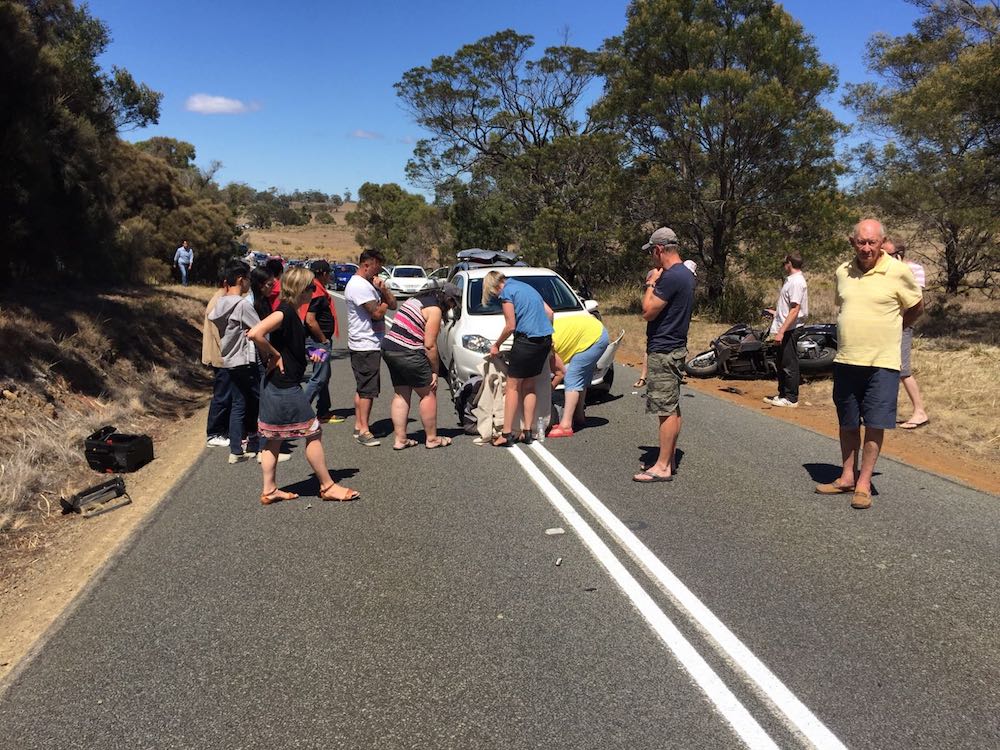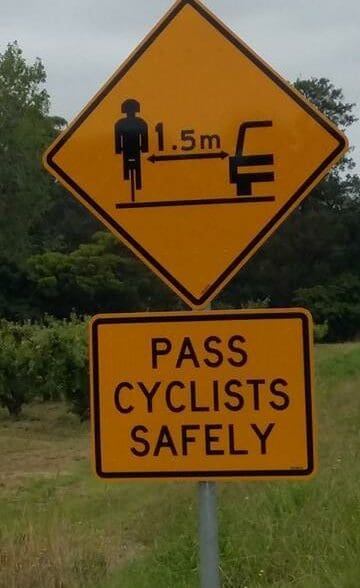A rule allowing drivers to cross solid white lines to overtake cyclists has now been extended to Victoria, making it a blanket rule across all Australian states.
Back in 2016, crash victim Maritha Keyser and rider groups said the implementation of the rule was putting the lives of motorcyclists in danger.
Maritha vainly launched a petition against the rule. The petition is now closed with 2340 signatures.
In 2015, Maritha was involved in an accident when a vehicle legally crossed a double white line to pass a slow-moving cyclist and give them the required 1m buffer (or 1.5m in over 60km/h zones).

Cyclist passing rule
The laws actually state that you can only cross or straddle a solid white line or painted island “if it is safe to do so”.
However, the very fact that it is allowable creates the wrong impression for drivers.
Motorists already can’t see riders, don’t want to see us or simply ignore us as no real threat to them.
They wouldn’t cross a solid line if another car was coming, but they seem willing to do so for motorcycles.
Here is a video example of a close call as a rider nearly runs head-on into a van that is over the white line on a corner because of a cyclist on the side of the road.
While Maritha’s accident was not a head-on with the overtaking vehicle, its presence on the wrong side of the road led to a chain of events that caused the crash that left her with permanent disabilities.
Maritha had the support of Australian Motorcycle Council, the Victorian Motorcycle Council, BMW Clubs Australia and others.
Legislating to protect one vulnerable road user that heightens the risk of another vulnerable road user is simply wrong, they all said.
Now, the Motorcycle Rides Association of Australia has chimed in wth the introduction of the laws in Victoria.
“This is a very dangerous law on roads like the GOR, the Black & Reefton Spurs, the St Andrews / Kinglake Road and many others,” says spokesman Damien Codognotto.
“In my opinion the police crash reports on head-on and rear-end crashes will not mention bicycles in most cases so the data will be distorted in favour of the new law being effective. That is what happens with road barrier crashes. There is no oversight or control to ensure crash data is reliable.



